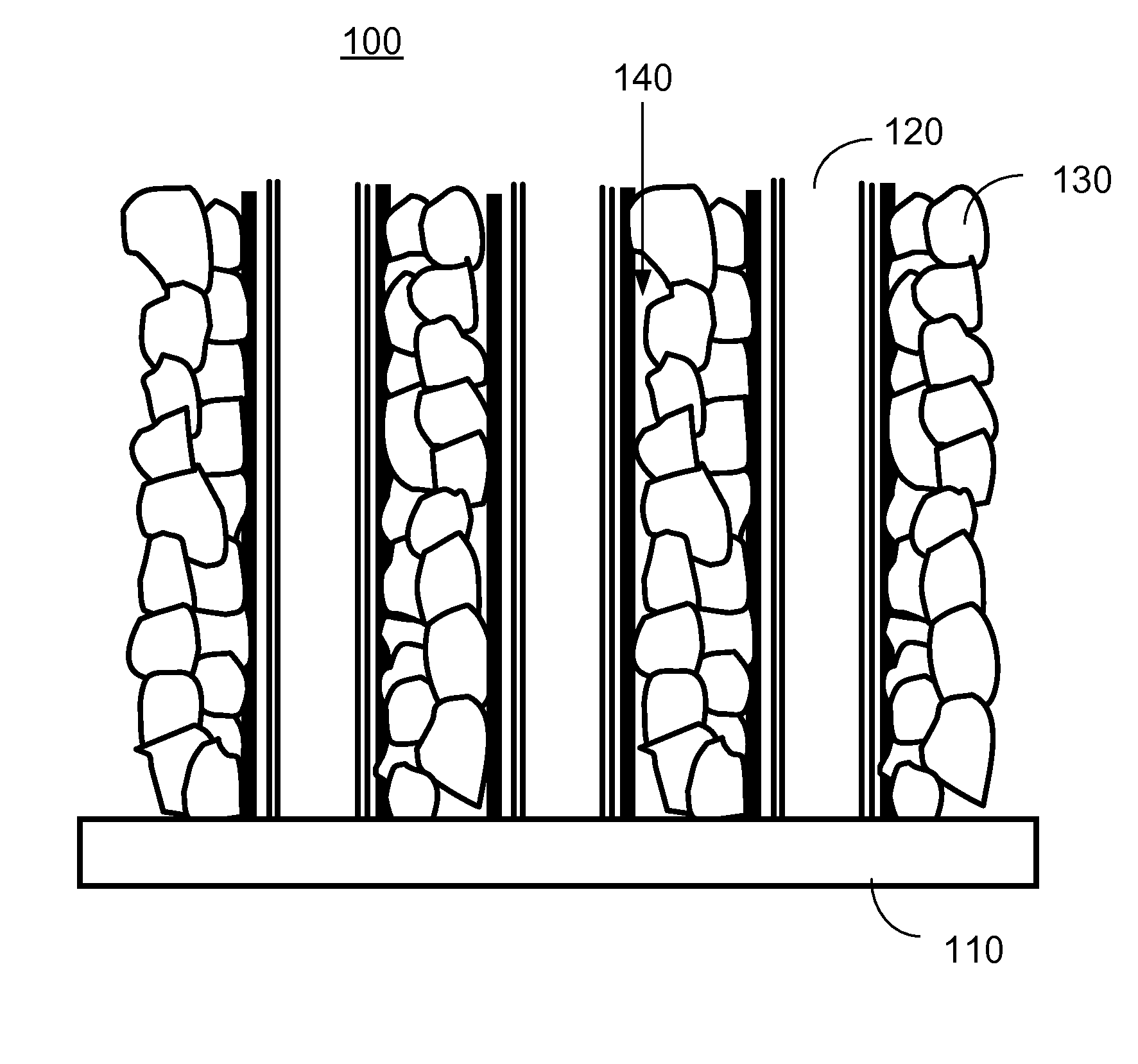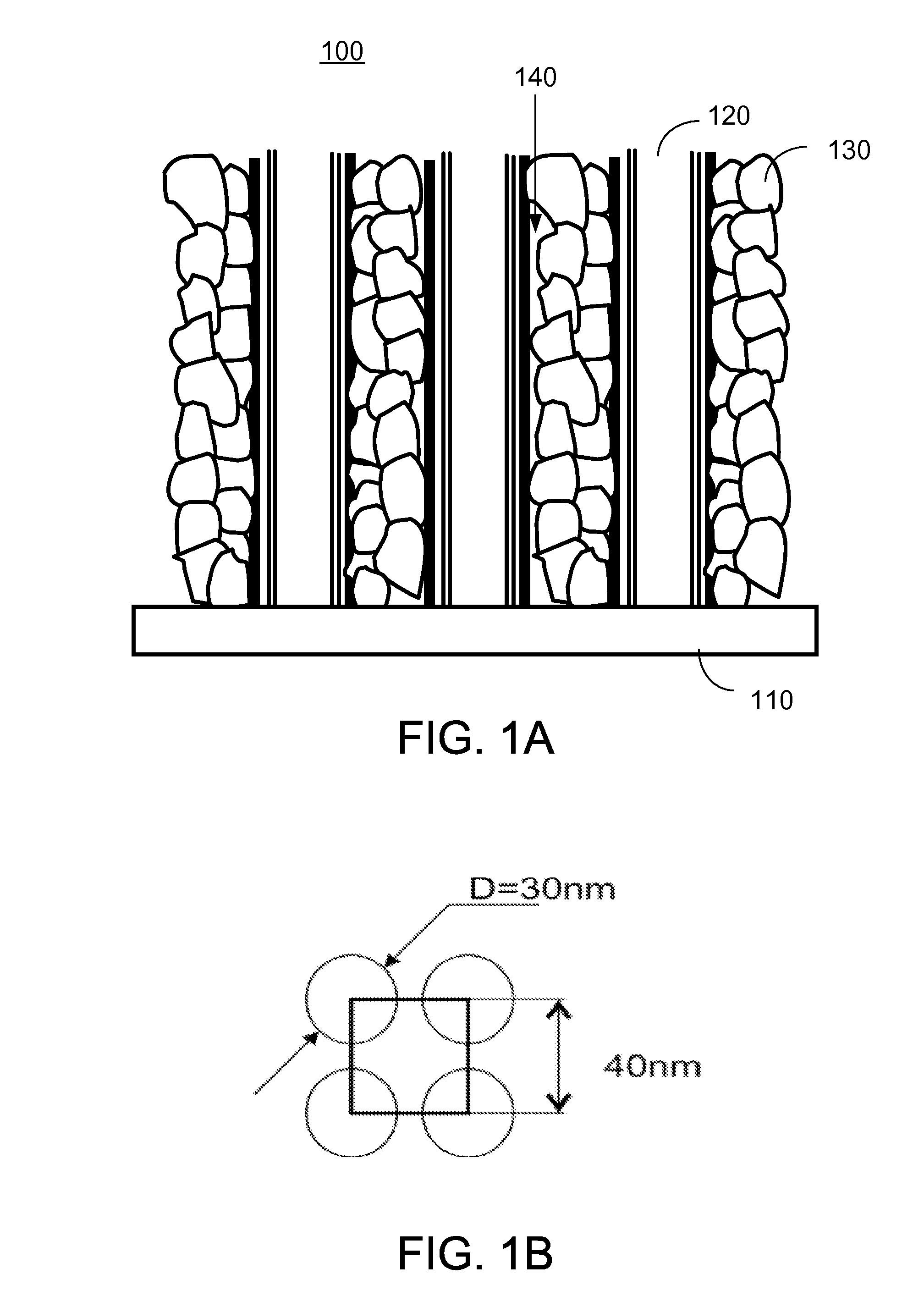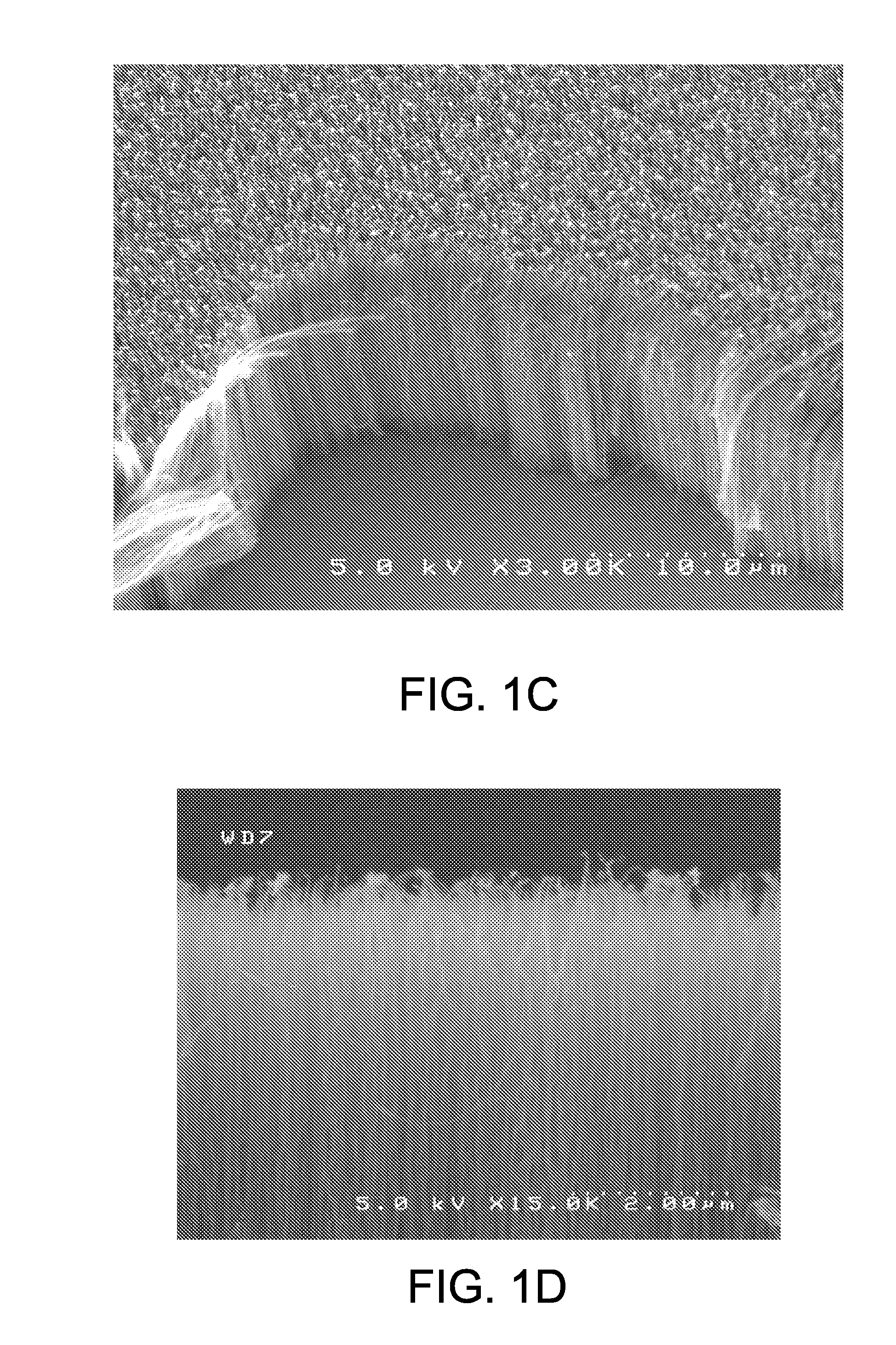Electrode useable in electrochemical cell and method of making same
a technology of electrochemical cells and electrodes, applied in secondary cell manufacturing, cell components, nanobatteries, etc., can solve the problems of poor electrical conductivity, further enhancement of lib performance limited, and capacity limitation below 150-170 mah/g
- Summary
- Abstract
- Description
- Claims
- Application Information
AI Technical Summary
Benefits of technology
Problems solved by technology
Method used
Image
Examples
example one
The Cathode Structure and Method of Making the Same
[0091]FIG. 1A shows schematically a cross-sectional view of a lithium-ion battery cathode according to one embodiment of the present invention. In FIG. 1A, the cathode 100 is a novel CNT-based cathode structure, which includes an electrically conductive substrate 110, single walled or multi-walled CNTs 120 in electrical contact with the conductive substrate 110, and nanoparticles 130 of an Li2MnxFeyCozSiO4 composite attached to the CNTs 120.
[0092]In one embodiment, the cathode 100 further includes an electrolyte solution 140 filled in spaces among the CNTs 120 and the nanoparticles 130 of the Li2MnxFeyCozSiO4 composite.
[0093]In one embodiment, the conductive substrate 110 can be a flexible (or rigid) thin film formed of an electrically conductive material, such as a metal, an alloy, a polymer, graphite, or a conducting oxide. For example, the conductive substrate 110 can be a flexible (or rigid) thin film aluminum or graphite foil.
[...
example two
Lithium-Ion Battery Comprising the Cathode
[0102]FIG. 2 shows schematically a cross-sectional view of a lithium-ion battery using a cathode according to one embodiment of the present invention. In FIG. 2, the battery 200 includes a cathode 202, an anode 204, and a separator 206 between the cathode 202 and the anode 204. The cathode 202 is similar to the cathode 100 in FIG. 1A, which includes an electrically conductive substrate 210, CNTs 220 in electrical contact with the conductive substrate 210, nanoparticles 230 of an Li2MnxFeyCozSiO4 composite attached to the CNTs 220, and an electrolyte solution 240 filled in spaces among the CNTs 220 and the nanoparticles 230 of the Li2MnxFeyCozSiO4 composite. The anode 204 includes an electrically conductive substrate 250, anode structures 260 in electrical contact with the conductive substrate 250, and an electrolyte solution 270 filled in spaces among the anode structures 260.
[0103]In one embodiment, the conductive substrate 210 of the catho...
example three
Synthesis of Li2MnxFeyCozSiO4 Solid Solution
[0109]An advantage of the Li2MnxFeyCozSiO4 composite as the ternary orthosilicate composite used in the cathode exists in that both the average potential difference of the cathode and the specific capacity of the cathode can be increased. As indicated above, conventional metal oxides used as cathode materials have limited average potential versus Li / Li+, mostly well below 4V, and most of the metal oxides have the specific capacity well below 180 mAh / g. In other words, these metal oxide cathode materials cannot meet both the requirements of the average potential difference being larger than 4V and the specific capacity being larger than 180 mAh / g.
[0110]In contrast, the Li2MnxFeyCozSiO4 composite not only allows the specific capacity to reach about 330 mAh / g and provides adequate average potential difference of at least 4V, but also has a satisfactory cycle life with original capacity. Thus, using the Li2MnxFeyCozSiO4 composite as the cathod...
PUM
| Property | Measurement | Unit |
|---|---|---|
| voltage | aaaaa | aaaaa |
| weight | aaaaa | aaaaa |
| weight | aaaaa | aaaaa |
Abstract
Description
Claims
Application Information
 Login to View More
Login to View More - R&D
- Intellectual Property
- Life Sciences
- Materials
- Tech Scout
- Unparalleled Data Quality
- Higher Quality Content
- 60% Fewer Hallucinations
Browse by: Latest US Patents, China's latest patents, Technical Efficacy Thesaurus, Application Domain, Technology Topic, Popular Technical Reports.
© 2025 PatSnap. All rights reserved.Legal|Privacy policy|Modern Slavery Act Transparency Statement|Sitemap|About US| Contact US: help@patsnap.com



